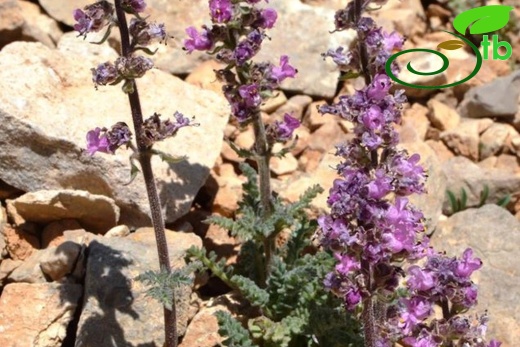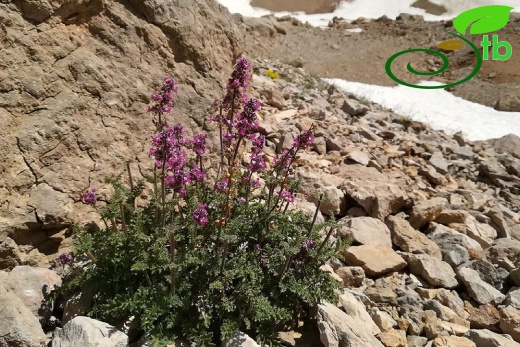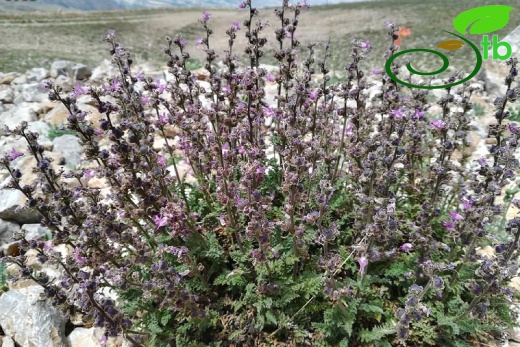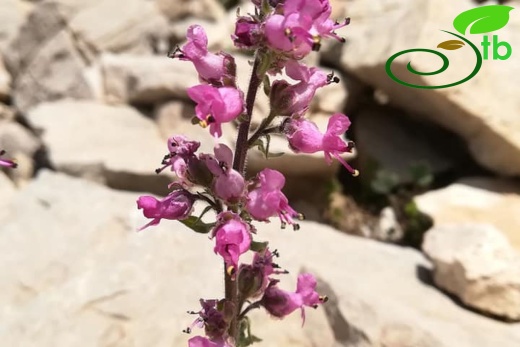Scrophularia fatmae
Scrophularia fatmae
Fragrant, perennial? Root usually longer than stem. Stem 1-3, usually erect, sometimes ascending, 17-25 cm long, 2-4 diam., quadrangular, rarely cylindrical, striated, rarely branched, densely glandular hairy. Leaves usually crowded near base, densely glandular hairy; basal leaves 4-6x0.5-1.5 cm, pinnatipartid or 2- pinnatisect, rarely pinnatifid; leaf axis grove above, ribbed below; stem leaves similar to basal leaves, smaller, sessile or very short petiolate, ± opposite. Inflorescence 4-13 cm long. Bracts longer than cymes stalk, oblong to linear. Cymes alternate, like opposite while dense, with 3-5 flowers. Calyx 3-4 mm long; lobes divided to base, ovate to orbicular; scarious margin white, more than 1 mm broad; median part dark pink to claret red, sometimes greenish, glandular hairy; hairs sometimes very sparse. Corolla 5.5 mm long, pink, glabrous; upper petals curved upward and larger than the others; tubes swollen like sack. Filaments 5-7 mm long, clearly exerted from corolla, white at base, claret red above, sparsely glandular hairy; anthers black. Staminode stalked; lamina flabelliform to reniform, slightly 8-11 lobes at apex. Ovary 1x1 mm, shorter than style, surface wrinkled, sparsely glandular hairy, develops on a disc; disc disappeared in fruit. Style 5-6 mm long, glabrous. Capsule 4.5-6 mm long, ± width equal to the length, sparsely glandular hairy; surface with black and brown spotted, opens by splitting into two parts, long beaked. Seeds ± curved, dark brown, 1.5-2x1 mm. Fl. June. Open mountain limestone slopes, 3000 m.
Endemic







